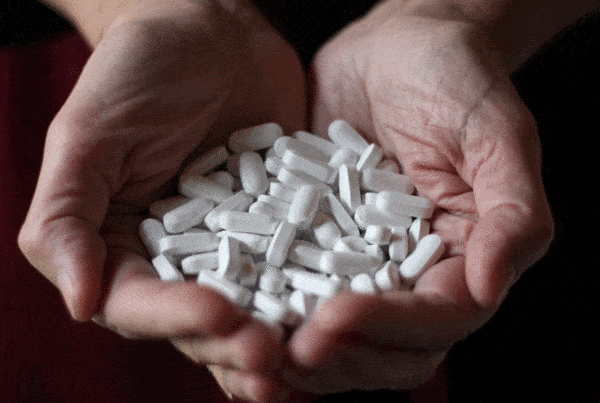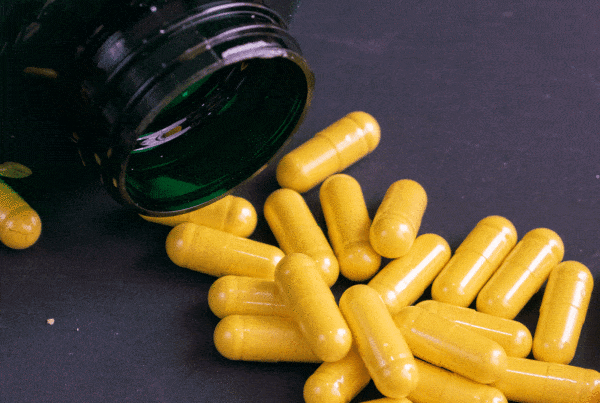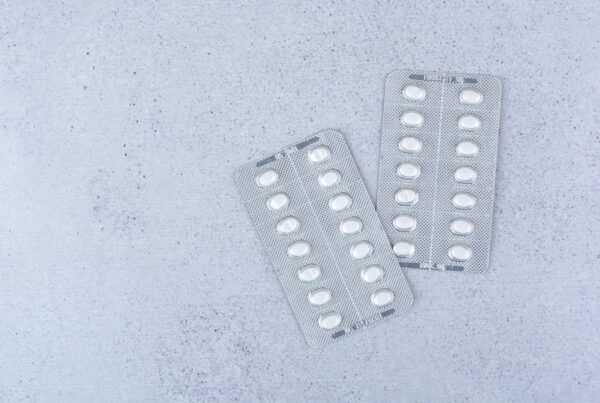Table of Contents
Key Points
- Suboxone blends buprenorphine and naloxone to reduce cravings and withdrawal symptoms.
- Buprenorphine is a partial opioid agonist, so it prevents opioids from getting you “high”.
- Naloxone discourages misuse while also protecting against overdoses.
- Suboxone is generally most effective when it’s combined with therapy and additional support systems.
- Suboxone provides a safer, outpatient-friendly alternative to methadone and similar treatments.
The opioid crisis has impacted countless millions across the country, making effective and accessible treatment options more critical than ever before. People struggling with opioid use or opioid addiction often find that the cravings and withdrawal symptoms that set in after cessation make recovery incredibly difficult. That’s where Suboxone can open up new avenues of recovery.
Suboxone is FDA-approved to support those in recovery from opioid addiction. Through a reduction in the overall discomfort and even pain of withdrawal, and by helping to control cravings, it helps create a sense of stability in those choosing to focus on recovery. By allowing for this focus and facilitating the development of healthy routines, Suboxone patients can work steadily toward their long-term recovery goals.
Suboxone is generally prescribed in outpatient settings, which makes it much more accessible. Understanding how it works can help patients and their loved ones make more informed decisions about their care.
What Is Suboxone & How Does it Work?
Suboxone is a prescription medication for OUD that combines naloxone and buprenorphine. These two substances work together to reduce the frequency and intensity of cravings and withdrawal symptoms that typically make quitting opioids so difficult.
Buprenorpine
Buprenorphine is what’s known as a “partial opioid agonist”, meaning it activates opioid receptors in the brain, but not all the way. This provides relief from withdrawal symptoms and cravings, but it also stops the user from getting the same high or feeling of euphoria that opioids like heroin and fentanyl create.[1] Buprenorphine also exhibits a ceiling effect, meaning that its impact plateaus after a specific dose. This makes misuse less likely and reduces the risk of overdose compared to full opioid agonists.
Naloxone
Naloxone is an opioid antagonist, which is included to deter misuse.[2] If Suboxone is taken as prescribed and directed, the opioids will have little actual effect. If someone tries to misuse it through injection or insufflation (snorting), the naloxone blocks the opioid receptors and triggers immediate withdrawal instead of euphoria.
Stabilization Without the High
This specific combination of buprenorphine and naloxone is why Suboxone is so highly effective in treating opioid use disorder. Not only does it reduce the cycle of cravings and withdrawal that makes it difficult to even stick with treatment, but it also blocks the highs of continued use that reinforce that addiction.
By calming the brain’s opioid receptors in a controlled way, Suboxone allows individuals to focus on therapy, work, and relationships, rather than the constant pursuit of opioids. It’s available in sublingual films and tablets, making it simple to use outside of clinical settings.
Benefits of Suboxone Treatment
- Relief from withdrawal symptoms: Suboxone eases the discomfort of opioid withdrawal, including nausea, muscle aches, and anxiety.
- Reduced cravings: By stabilizing opioid receptors, it lowers the urge to use other opioids.
- Lower risk of misuse: The ceiling effect of buprenorphine, combined with naloxone’s deterrent properties, makes Suboxone safer than full opioid agonists like methadone.
- Flexibility and access: Suboxone can often be prescribed in outpatient settings by trained healthcare providers, making it more accessible for patients who cannot attend daily clinic visits.
- Supports long-term recovery: By reducing physical dependency struggles, individuals have a better chance to engage in counseling, behavioral therapy, and support groups, all of which are critical to recovery.

Suboxone has become a cornerstone of medication-assisted treatment. When combined with therapy and social support, it helps people break free from the cycle of opioid use and rebuild stability in their daily lives.
Risks, Side Effects, and Misconceptions
Like all medications, Suboxone comes with potential risks and side effects. Most are mild and manageable, but others can become severe if left unaddressed.
Common side effects include constipation, headaches, nausea, sweating, and drowsiness.[3] Some patients report trouble sleeping or mild mood changes when starting Suboxone. These symptoms often improve over time as the body adjusts.
Serious risks can occur if Suboxone is mixed with alcohol, benzodiazepines, or other sedatives, as all of these substances depress the central nervous system (brain and spine, the body’s primary control center). Combining them increases the risk of slowed breathing, overdose, and death.[4] This is why Suboxone should always be taken exactly as prescribed.
There are also misconceptions about Suboxone. One of the most common is the belief that Suboxone is just one drug replacing another. The reality is, Suboxone doesn’t get the patient high, and it stops them from getting high through other sources.
Suboxone vs. Other MAT Modalities (Medication Assisted Treatment)
While Suboxone is an incredibly effective treatment, it’s not the only one, though it does have some notable advantages over other medications.
Methadone is a full opioid agonist, and it can fully activate opioid receptors. This means it is highly effective for some, but comes with a much higher risk of misuse.[5] Methadone is usually dispensed at specialized clinics, which require daily visits, and which are often the first of many barriers to people getting the help they need.
Subutex is similar to Suboxone, but it only contains buprenorphine, not naloxone. While effective, it carries a higher risk of misuse since it doesn’t have the same protective effect that opioid antagonists have.
Naltrexone is an opioid antagonist that completely blocks all opioid receptors.[6] It’s non-addictive and stops any opioids from affecting the user. The catch is that the patient needs to have fully detoxed before starting it, which can be a massive hurdle for those with severe addictions.
What to Expect From Suboxone Treatment
Beginning Suboxone treatment usually involves an induction phase, where a licensed prescriber helps the patient transition safely from other opioids. This step is essential because starting Suboxone too soon after taking opioids can cause precipitated withdrawal.[7] This is a sudden, intense onset of symptoms caused by buprenorphine and naloxone displacing full opioids from the receptors.
During induction, healthcare providers typically wait until mild to moderate withdrawal symptoms appear before giving the first dose. The dosage is then carefully adjusted over time to find the lowest adequate amount that reduces cravings and withdrawal.
Patients should expect close, even 24/7 monitoring in the early days, with adjustments as needed. Once stabilized, Suboxone is taken daily as a sublingual film or tablet. With proper supervision, this process allows individuals to focus on recovery rather than fighting daily cravings.
Combining Suboxone with Therapy & Support
Suboxone isn’t a standalone treatment program, and it needs more than just a periodic dose. It’s intended to be part of a larger treatment plan, so it works best when it’s used in combination with evidence-based behavioral therapies and peer support. Its role is to provide a solid foundation for recovery.
While the medication can help stabilize and optimize brain chemistry, the therapy addresses the social, behavioral, and even emotional aspects of addiction. Cognitive behavioral therapy, or CBT, is a very common treatment that helps patients recognize their triggers, reshape their thought patterns, and develop healthier coping skills. Peer support groups, such as recovery circles and 12-step programs, can be critical sources of encouragement and accountability.
Many treatment programs and rehab centers also incorporate family therapy and counseling. This can help strengthen support systems at home by enhancing communication and establishing clear boundaries.
Explore Evidence-Based Recovery Solutions
Suboxone is one of the most essential tools in modern opioid addiction recovery. Combining buprenorphine and naloxone reduces cravings, eases withdrawal, and lowers the risk of relapse, all while discouraging misuse. Reliable addiction treatment doesn’t need daily clinic visits any longer, since Suboxone can be prescribed in outpatient settings with ease.
While practical and accessible, Suboxone isn’t a cure-all on its own. Long-term recovery success needs a tailored blend of therapy, support, and ongoing medical supervision, with medication check-ins with a provider. For many, though, it’s a critical first step toward a healthier future of stability and freedom from opioids.
Frequently Asked Questions About How Suboxone Works
Sources
[1][2]Togioka, B. M. (2024, February 24). Buprenorphine and naloxone. StatPearls [Internet]. https://www.ncbi.nlm.nih.gov/books/NBK603725/
[3][4][7]National Institutes of Health. (n.d.). DailyMed – SUBOXONE- buprenorphine hydrochloride, naloxone hydrochloride film, soluble. U.S. National Library of Medicine. https://dailymed.nlm.nih.gov/dailymed/drugInfo.cfm?setid=8a5edcf9-828c-4f97-b671-268ab13a8ecd
[5]Durrani, M. (2024, January 11). Methadone. StatPearls [Internet]. https://www.ncbi.nlm.nih.gov/sites/books/NBK562216/
[6]U.S. National Library of Medicine. (1970, January 1). Chapter 3C: Naltrexone. Medications for Opioid Use Disorder: For Healthcare and Addiction Professionals, Policymakers, Patients, and Families: Updated 2021 [Internet]. https://www.ncbi.nlm.nih.gov/books/NBK574913/
Embers Recovery Editorial Guidelines
At Embers Recovery, we take your health and wellness seriously. We have a thorough process in place to ensure the integrity of information that is displayed on our website. All content published to our site undergoes a rigorous medical review by a doctorate level clinician to ensure medical accuracy.
Read More About Our Process



